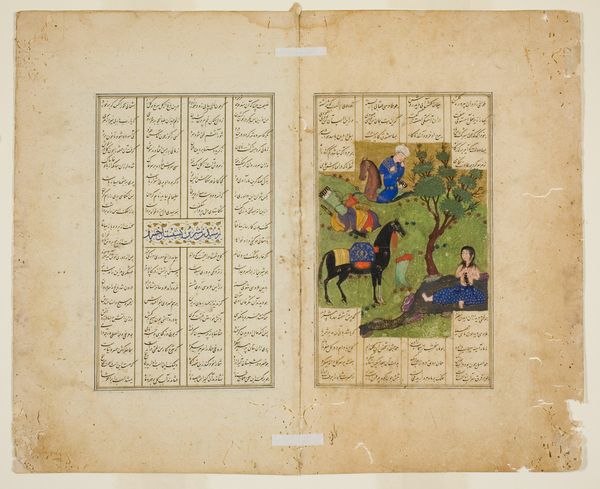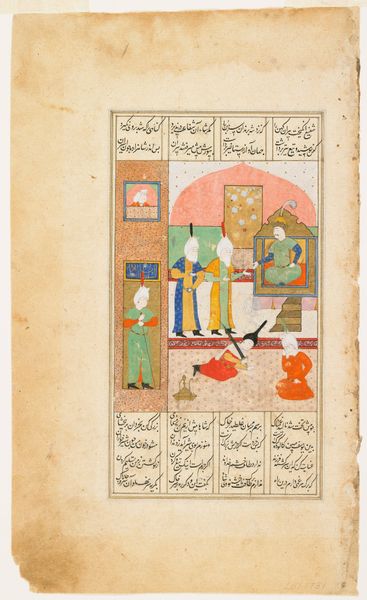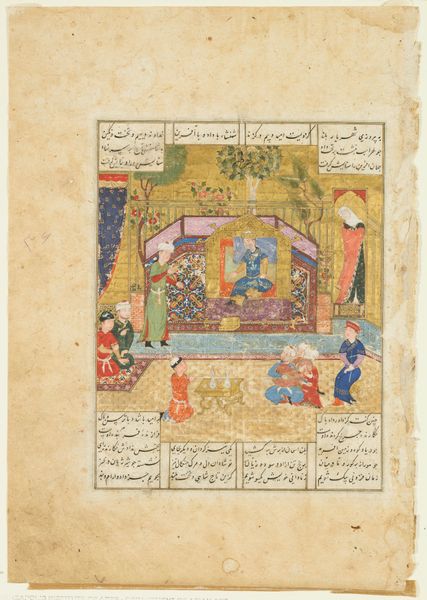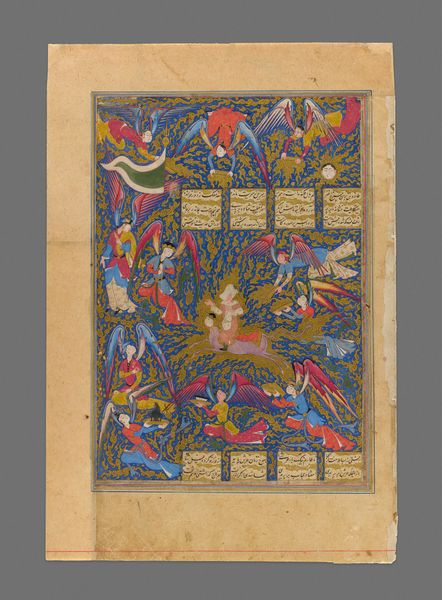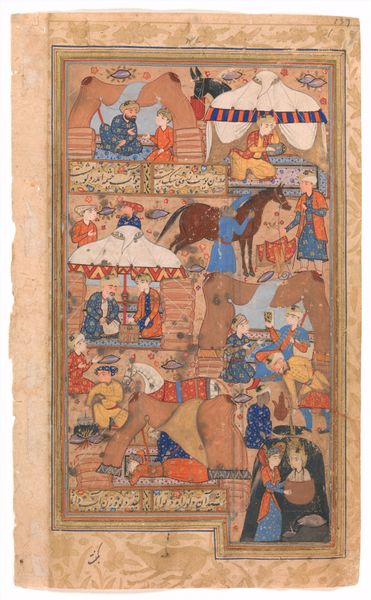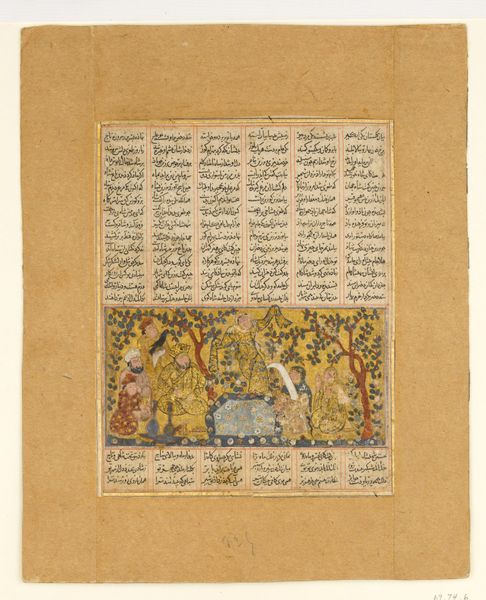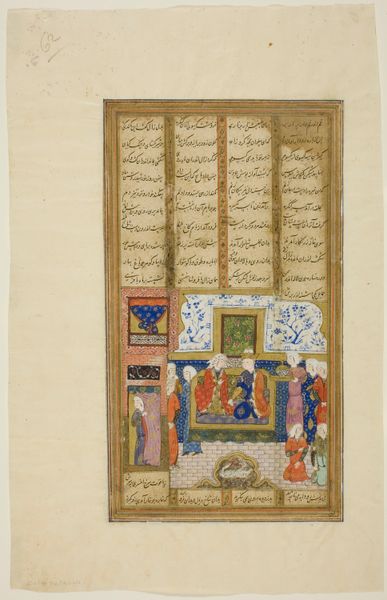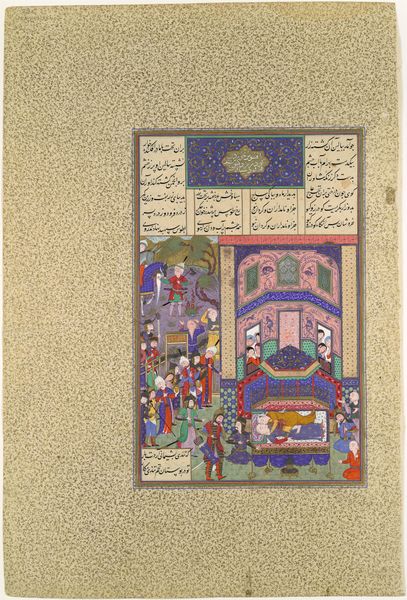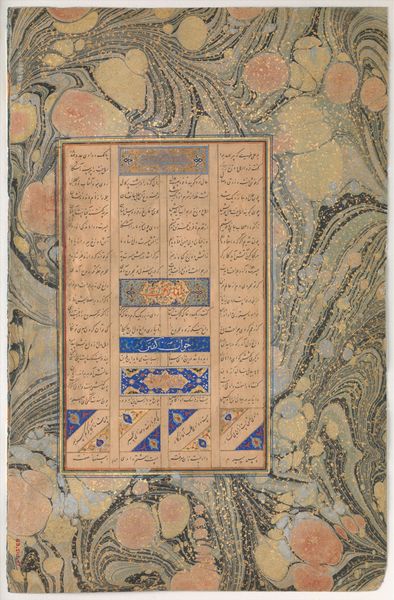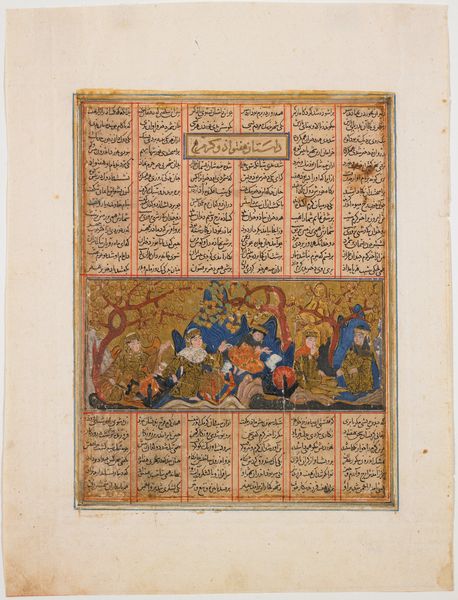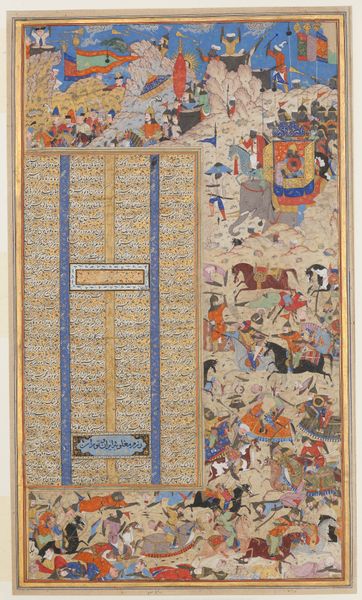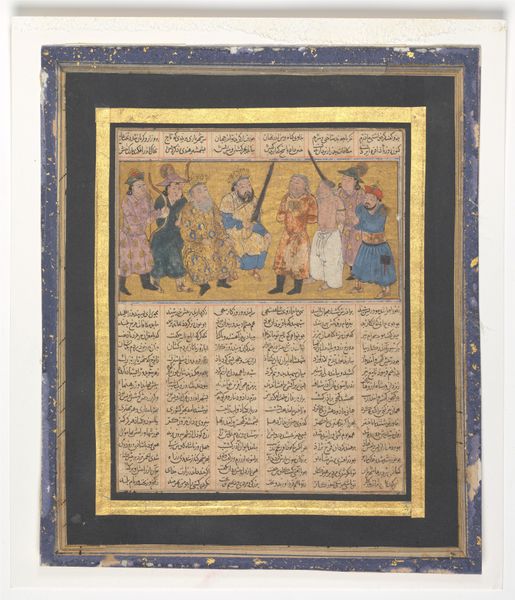
"The Murder of Iraj," Folio from a Shahnama (Book of Kings) of Firdausi 1475 - 1499
0:00
0:00
painting, paper, ink
#
portrait
#
narrative-art
#
painting
#
death
#
paper
#
ink
#
geometric
#
islamic-art
#
history-painting
#
miniature
Copyright: Public Domain
Curator: Welcome. We’re looking at "The Murder of Iraj," a folio from a Shahnama, or Book of Kings, of Firdausi, made between 1475 and 1499. The materials include ink and paint on paper, created in Persia. Editor: The violence is softened, somehow. Despite the graphic nature of the subject, the tight composition, contained within that meticulously bordered rectangle, gives it a removed, almost dreamlike quality. Curator: The materials and labor that went into this are considerable. Think of the preparation of the paper itself, likely handmade and burnished, the grinding of pigments for the vibrant colors, the meticulous application of gold leaf. It's a testament to the value placed on manuscript illumination in the Timurid dynasty. This wasn't mass production; it was luxury. Editor: And the iconography…look at the positioning of the figures. Iraj, lying prone, embodies vulnerability, while the murderers, standing above him, signify power and dominance. That canopy, the patterning of the textiles—they aren’t just decoration, but signify status, adding to the drama and setting the scene of betrayal and courtly intrigue. Curator: Absolutely. And consider the circulation of such an object. This folio would have been part of a larger book, commissioned, owned, and viewed by an elite circle. Its value wasn't just aesthetic but also political and social. Displaying this book signified wealth, power, and a connection to a rich cultural history. Editor: This scene taps into very deep archetypes. We are drawn to images of injustice, to stories of heroic figures brought down by treachery. And here, despite its historical setting, the image still has an impact. The power dynamic between victim and aggressor feels timeless, somehow. Curator: Thinking about its creation also contextualizes the image. The collaborative process is important; this would have involved workshops of artisans specializing in calligraphy, painting, and illumination, working under the direction of a master artist. This brings up boundaries between 'artist' and 'artisan'. Editor: The repeating geometric motifs throughout point to this sense of the cyclical, hinting at wider truths about fate and sacrifice. It is why these images still stir something primal in us centuries later. Curator: This Shahnama offers insights into artistic production and class structures of its time, it enriches our understanding of materials used. Editor: For me, its visual vocabulary illuminates not only a specific moment in Persian history, but it speaks volumes about universal human experiences, our fascinations and fears across time.
Comments
No comments
Be the first to comment and join the conversation on the ultimate creative platform.

